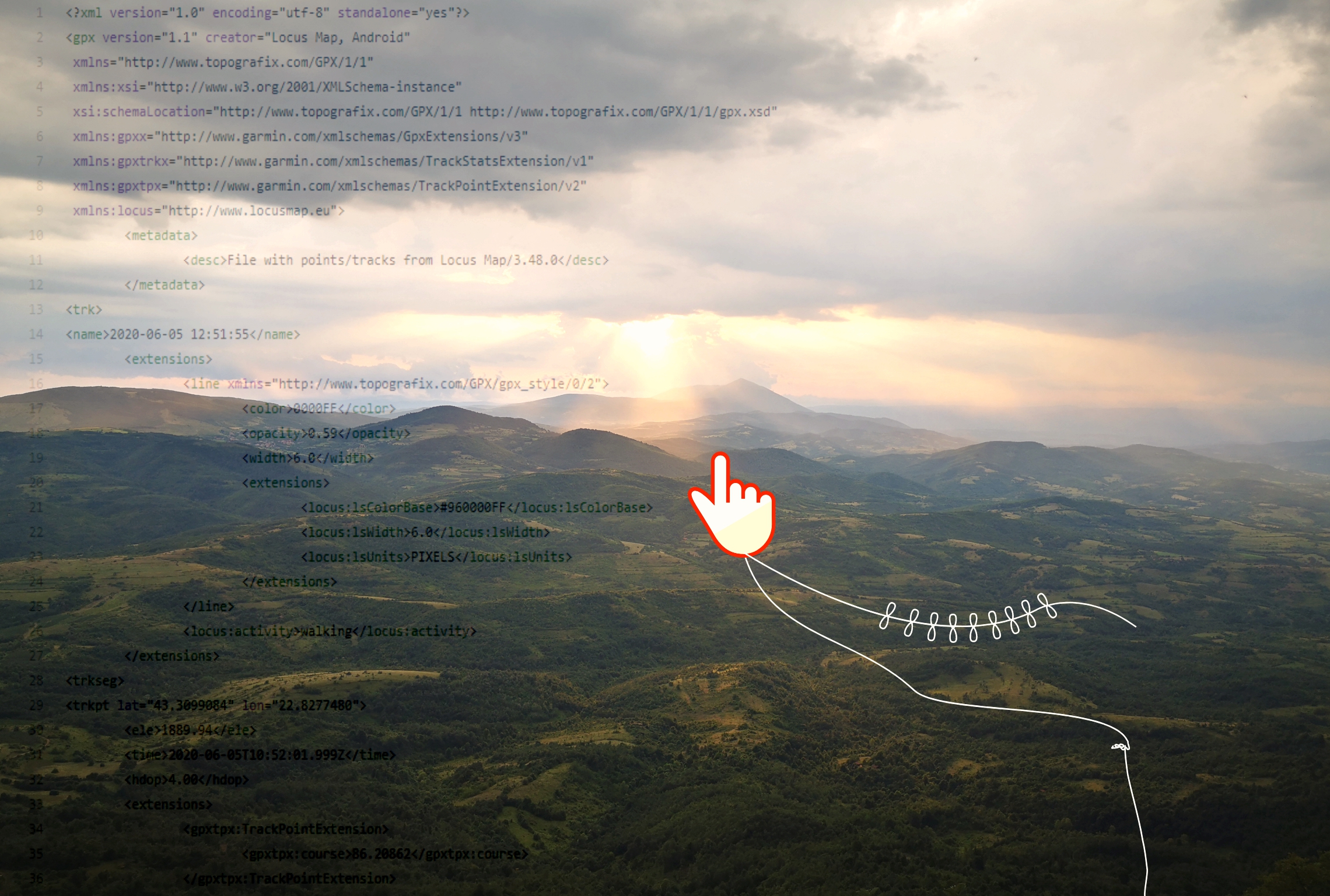While I was on a two-week trek through Georgia in 2018, exploring forests, villages and mountain ridges and peaks that were off the beaten path, I had the opportunity to encounter adventurers from different countries. What brought people from Serbia, Australia, Germany or the Czech Republic to these remote treks was one person – Jozef. The traditional assumption here would be that Jozef is an experienced mountain guide that we met or paid for his services. Contrary to that, Jozef is a hiker who established a website called Caucasus Trekking where he posted his routes and detailed explanations in an open format, allowing people around the world to use this data and create their own itineraries to explore the beauty of the Caucasus Mountains.
This opportunity is available to us not only because of better mobile phones, internet connections or user-friendly applications, but also because of open data. Put simply, “Open data is data that can be freely used, shared and built-on by anyone, anywhere, for any purpose.” In the context of active tourism, such as biking or hiking, this means that anyone with a mobile phone and an interest in trying out mobile applications that allow them to import data files containing location information can try out open routes to explore new countries or regions.
As the European Data Portal explains, data can be regarded as a prerequisite for new digital services in tourism. Beyond that, open data can be viewed as a way to democratize the digital transformation of tourism. More specifically, when we use free or paid apps such as the running and cycling app Strava, we get limited access to our own data and little control over how that data is used by the app owners. On the other hand, when we decide what data we want published, add adequate explanations (metadata), and publish this data as open (using licenses such as Creative Commons licenses) – we enable an open and free exchange of information that can benefit people across the world. If we go back to the example of Caucasus Trekking, the opening of quality data contributed to much more than my vacation, its impact spreads to the touristic offering of Georgia, safety and enjoyment of domestic and international hikers, profits of local businesses, and possibly even to the revitalization of remote villages.
Open data and active tourism in Serbia
This openness in exchanging data and information in the context of tourism is not a new idea in Serbia. In 2009, a website Staze i bogaze was established and contains information on routes across the Balkan peninsula under the moto “together, we know more!”. The platform Wikiloc allows users to freely download or upload trails for locations around the world, listing over 28,000 trails for Serbia. However, for open data to truly transform active tourism in Serbia, these are some of the potential prerequisites:
· Publishing data on platforms that include licenses compatible with open data, hence enabling users to use that data for commercial or non-commercial purposes.
· Publishing more data on cultural or historical heritage locations that can be combined with data on biking, hiking, running or driving routes.
· Publishing data on small local businesses that can not only support local businesses, but also allow domestic or international travelers to plan for both adventure and comfort.
The publishing of this data is now made easier; namely, Serbia has a national Open Data Portal where local governments could publish touristic data. Relevant ministries, local touristic organizations, private businesses, hiking/biking/running communities or interested citizens could also give their data contributions in this area. For example, the Priboj municipality has already opened four hiking routes on the Open Data Portal. At the moment, efforts to open tourism-related data in Serbia rely on small-scale initiatives. Alternatively, the efforts to collect, standardize and publish this data could be organized on a national or regional scale, in order to result in frictionless data that can be used by the all interested stakeholders.
Future of tourism is open data
In 2020, when every country in the world is affected by the Covid-19 pandemic and government measures can change on a weekly basis, saying “future of XY” may appear as an empty phrase. However, the pandemic might offer a timely opportunity for a fruitful discussion on how Serbia’s citizens could enjoy more of what their own country can offer in terms of cultural, historical or natural heritage through open data.
If we imagine a scenario in which this data is open, then closed borders and the pressure of closed borders and staycations could be easier to bear. More active or creative users of that data could create their own itineraries to bike across Southern and Eastern Serbia, while not missing historical sites, avoiding major roads as much as possible and exploring local villages. On the other hand, someone with a more relaxed attitude might randomly click on a trek, download it on their phone and explore the route someone else created.
If you, the reader of this blog, find yourself in the latter example, feel free to download one of the three treks I created while hiking on Stara planina (the “old mountain”) in South-East Serbia, a natural border with Bulgaria.
Alternatively, think of the ways your knowledge, experience or community can boost the creation of more open data in Serbia and help in democratizing the digital transformation.
To start with, you could create an account for your organization or community on the Open Data Portal and begin using existing data or sharing your data resources. Join our Open Data community and expand the pool of data from Serbia for the world with just a few clicks.

 Locations
Locations
